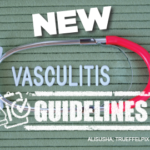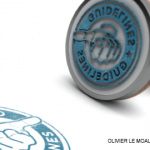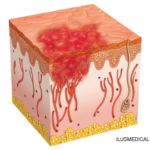ATLANTA—The American College of Rheumatology (ACR), in partnership with the Vasculitis Foundation (VF), released three new guidelines for the treatment and management of systemic vasculitis. Vasculitis is a group of about 20 rare diseases that have inflammation of blood vessels in common, which can restrict blood flow and damage vital organs. The three guidelines cover six forms of vasculitis, and a fourth guideline on Kawasaki disease will be released in the coming weeks.
“Many rheumatologists may have limited experience caring for patients with these diseases,” said Dr. Sharon Chung, Director of the Vasculitis Clinic at the University of California, San Francisco, and the lead investigator of the guidelines. “However, the treatment options for patients with vasculitis have expanded in recent years. Thus, these guidelines provide practitioners evidence-based recommendations to help navigate the treatment path for their patients.”
The guideline for giant cell arteritis (GCA) and Takayasu arteritis (TAK), both forms of large vessel vasculitis, provides a total of 42 recommendations and three ungraded position statements. The recommendations and statements address clinical questions relating to the use of diagnostic testing (including imaging), treatments, and surgical interventions in GCA and TAK. Recommendations for GCA support the use of glucocorticoid-sparing immunosuppressive agents and the use of imaging to identify large vessel involvement. Recommendations for TAK include the use of non-glucocorticoid immunosuppressive agents with glucocorticoids as initial therapy.
The guideline for polyarteritis nodosa (PAN), a medium vessel vasculitis, provides a total of 16 recommendations and one ungraded position statement. The recommendations support early treatment of severe PAN with cyclophosphamide and glucocorticoids, limiting toxicity through minimizing long-term exposure to both treatments, and the use of imaging and tissue biopsy for disease diagnosis. The recommendations endorse minimizing risk to the patient by using established therapy at the start of the disease and identify new areas where adjunctive therapy may be warranted.
The guideline for antineutrophil cytoplasmic antibody–associated vasculitis (AAV), a small vessel vasculitis, provides a total of 41 recommendations and 10 ungraded position statements for granulomatosis with polyangiitis (GPA), microscopic polyangiitis (MPA), and eosinophilic granulomatosis with polyangiitis (EGPA). According to the VF, the overall, worldwide incidence of AAV ranges from 0.5.-20 cases per 1 million people. In children, the incidence ranges from 0.45-6.4 cases per 1 million children per year. The guideline provides recommendations for remission induction and maintenance therapy as well as adjunctive treatment strategies in GPA, MPA, and EGPA. The recommendations include the use of rituximab for remission induction and maintenance in severe GPA and MPA and the use of mepolizumab in non-severe EGPA.



